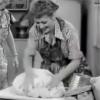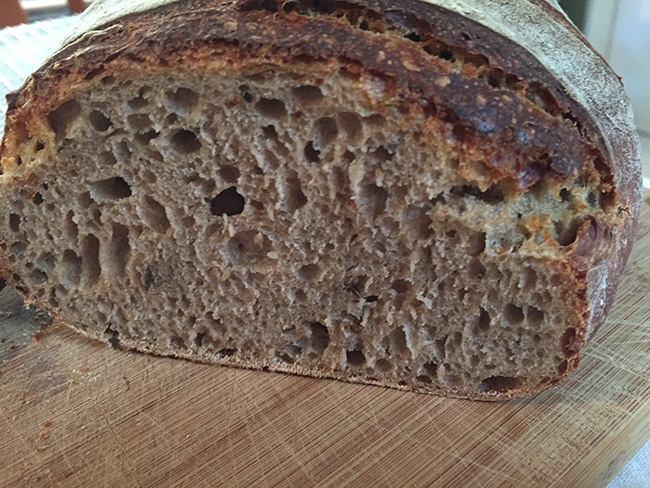Back in April, Khaled let me know he had enrolled in the Sourdough Bread workshop at the San Francisco Baking Institute. I volunteered to meet him there and, after he had a night to recover a bit from the 15 hour flight from Dubai, take him on a tour of San Francisco bakeries and show him some of the city sights. I also volunteered brother Glenn, who lives in San Francisco, to act as native guide.
So, Khaled and his friend and business associate, Jamal, arrived last Friday. My wife and I picked them up at their hotel Saturday morning and drove to downtown. We parked in the Mission Street Garage, because we expected to leave the car most of the day, and I thought Khaled and Jamal would enjoy the walk to the Ferry Building, where Glenn joined us. I had warned Khaled that July can be chilly in San Francisco. Even though, it turned out to be unseasonably warm (68 dF), coming from the UAE, the visitors said it seemed quite chilly to them.
There is a fabulous Farmer's Market at the San Francisco Ferry Building on Saturday mornings. In addition to wonderful produce and other foods, there are three bakeries that come: Acme (Acme Bread Company - Ferry Building Marketplace), which has a permanent stall inside the Ferry Building, Della Fattoria (Della Fattoria Homepage), from Petaluma and Downtown Bakery (Downtown Bakery & Creamery | Home - Healdsburg), from Healdsburg. We tasted samples and bought various pastries and breads at each.

Glenn's office is on the 22nd floor of one of the Embarcadero Center towers, a couple hundred yards from the Ferry Building, so he took us up for a panoramic view of the Bay. By then, it was time for lunch. We walked over to California Street and up to Tadich Grill (Tadich Grill | San Francisco, CA), which, for those of you who don't know, is the oldest restaurant in the City (founded during the Gold Rush era) and still one of the best, especially for fish. Hmmmm ... If you take into account the delicious, very much old-style San Francisco Sourdough that Boudin custom bakes for Tadich Grill, we actually "visited" 7 (seven) bakeries.
We then hopped on the Muni and headed down Market to the Castro. We got off the trolly close to Thorough Bread Bakery (Thorough Bread and Pastry), one of my favorites, but Khaled was very focused on visiting Tartine (Tartine Bakery), so we walked there first. He said he just needed to see it. As usual, the line was half a block long. I stood in line, "just in case," while Susan and Khaled squeezed past the line, into the bakery/cafe, so Khaled could see their offerings. He came back to the end of the line with this really intense, serious look and announced he "had to get something," no matter how long we had to wait. So, another of those really tough sacrifices one makes for a friend, we had coffee and (too many) pastries at Tartine. Everything was amazingly wonderful.
So, we walked back to Thorough Bread Bakery. Their breads and Pastries looked wonderful as they always do, but we were already suffering from a mixture of butter intoxication and hyper-caffeination, so we just looked. Then we took the Muni back downtown to retrieve our cars and met again at B Patisserie (b. patisserie) on California and Divisadero.
Now, it occurs to me that you might get the idea this was some sort of self-indulgent carbohydrate orgy. I want you to understand, Khaled and Jamal are serious businessmen, in San Francisco for professional training. They have very high standards and are both clearly committed to producing an authentic product of the highest quality to their clientele. They have an exceptional challenge: They aim to introduce French-style, artisanal pains au levain in several varieties to a country that has no prior exposure to these foods. Moreover, neither man has personally traveled in France, Italy or other countries where the breads they will be baking are "native." They know what they have read about and seen photos of here on TFL and in their cookbooks and what they have baked themselves. One of their goals for this trip was to taste as many of the types of breads they anticipate baking as possible at as many excellent bakeries as possible. I do think that the bakeries they visited would be hard to beat, setting a standard of quality for which to strive for any baker.

Jamal and Khaled performing intensive product assessment at b. patisserie
Susan, Glenn and I had great fun facilitating Khaled and Jamal's investigations.

David



















